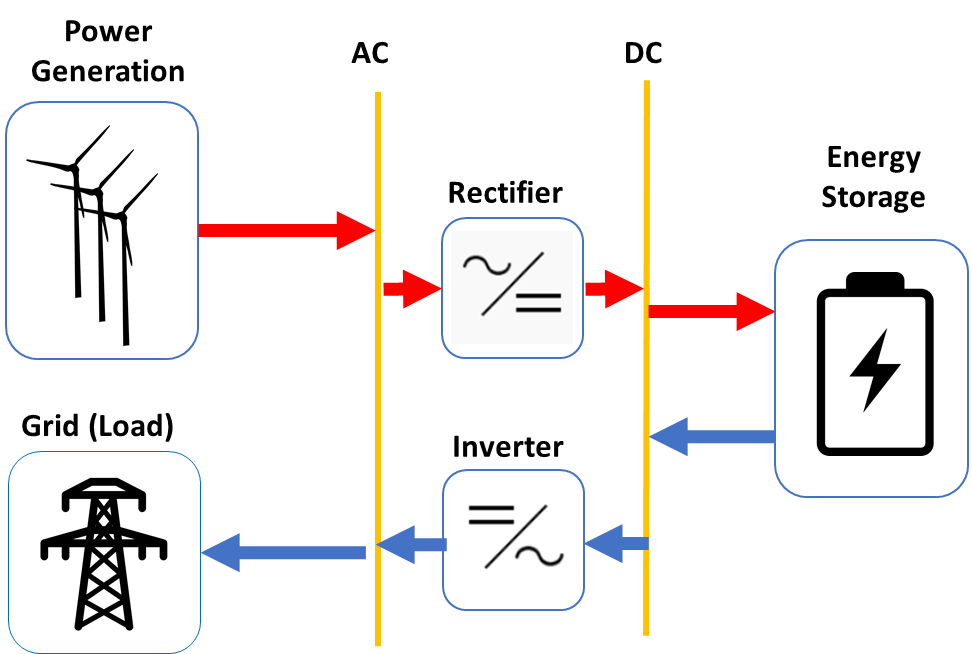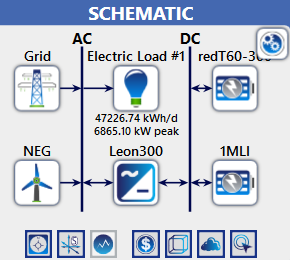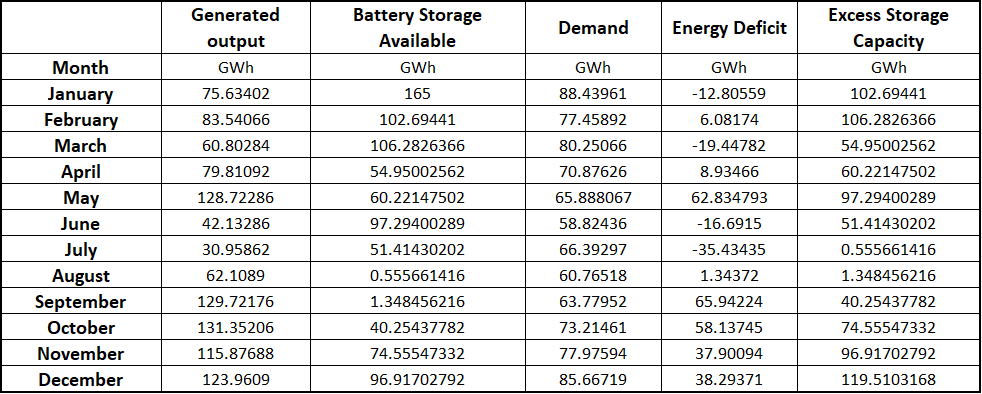System Configuration
|
To allow analysis to be performed on the proposed system of connecting wind turbines to an converter for storage we configured a suitable system schematic based on input from the PNDC.
Using electrical fundamentals the wind energy would be converted from AC to DC through a rectifier circuit to be stored in any of the selected storage solutions as a DC voltage. When stored energy was required it would be converted back to an AC voltage through the inverter to be fed to the grid. As illustrated in the schematic, the system is split between an AC bus and a DC bus with intermediary components such as a converter and inverter dealing with the transition between the two. The AC bus houses the external electrical grid connection and the wind turbines whilst simulating the electrical load on the system. The DC bus houses the storage components such as Li-Ion, redox flow batteries and connection to an electrolyser for ammonia generation. |
HOMER
|
The system schematic was generated in HOMER Pro to allow analysis of both the RED T vanadium flow battery and the tesla Lithium ion battery.
The system was fully configurable in HOMER where the number of components and their parameters could be altered to simulate and optimise various solutions in accordance with the aim and objectives. HOMER software calculated the optimum number of batteries needed to supply the demand with a hybrid system of wind turbines and batteries. |
EXCEL
Header background: https://techcrunch.com/2016/04/22/drastic-disruptions-are-underway-in-the-energy-market/
[1] www.homerenergy.com
[1] www.homerenergy.com


